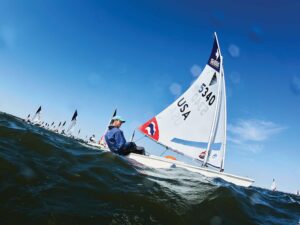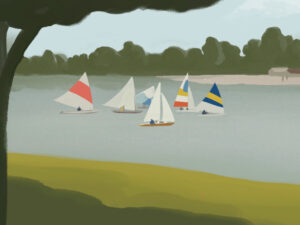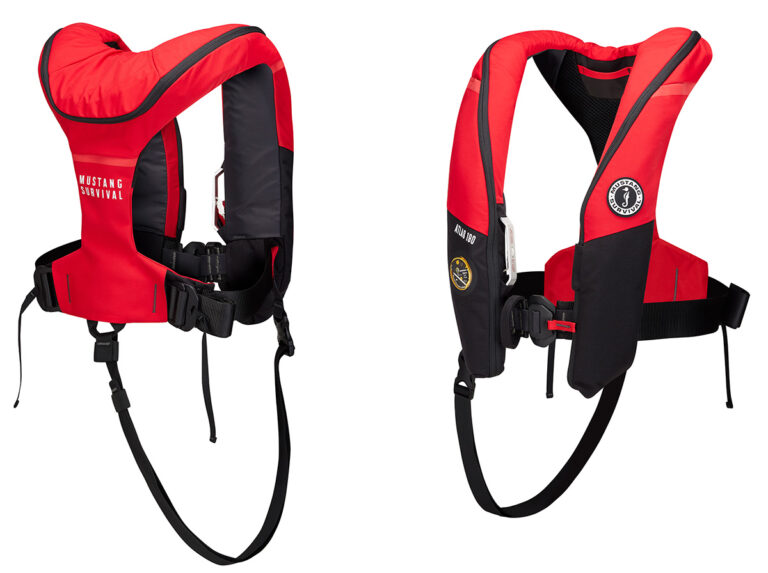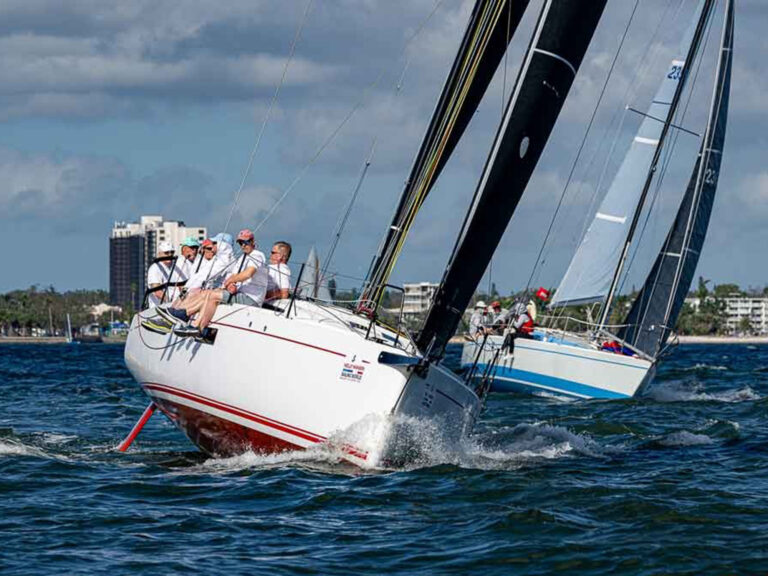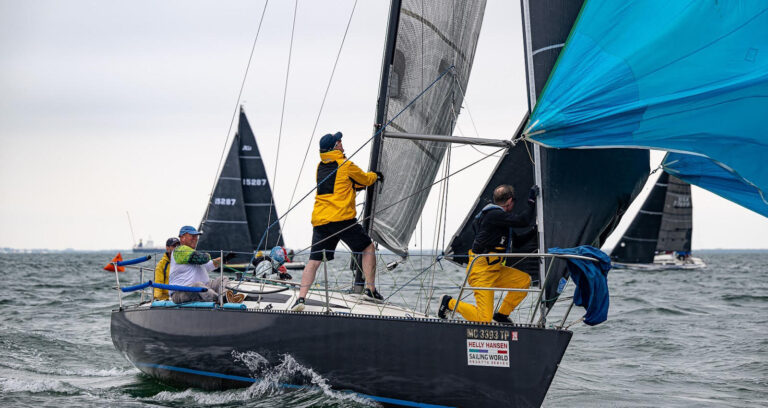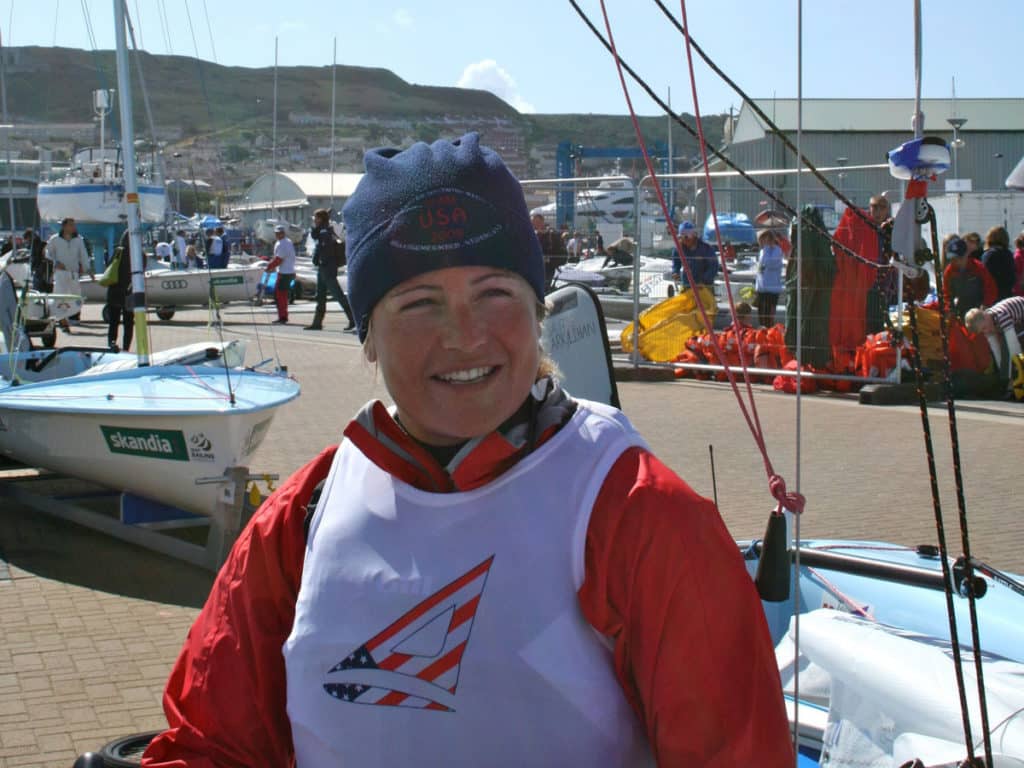
110608_CLark_SFG
The general rule of thumb for sailing’s Olympic Trials is that if you’re looking for upsets, for underdogs breaking through, you should probably look elsewhere. Perhaps more than in any other Olympic sport in the United States, the sailing trials—usually decided by a grueling 9-day closed regatta—have rewarded the team with the most talent and the most thorough preparation.
But this is a new dawn for the U.S. Olympic Sailing Trials. The selection process for the 2012 U.S. Olympic Sailing Team is spread over two ISAF Grade 1 regattas, both of which take place on foreign shores and are stacked with the best international competition.
As of Wednesday evening, we’re three days down in the Skandia Sail For Gold (click for links, results, live blogging, and tracking), and have three days left to go. This means the sailors are approximately a quarter of the way through the Trials for the U.S. sailors (the second half will take place at the 2011 ISAF Combined World Championships in Perth, Australia, in December), a good time to check in and see who is rising to the top, and whether there might be any upsets in the works. For a look at how each team did up to this point, check the USSTAG Trials Tracker.
Going into the first half of the Trials, there were four U.S. Sailing Team AlphaGraphics sailors/teams who were very strong candidates to win their respective Olympic berths. They had been a few steps ahead of their next domestic competition for much of the previous three years and it appeared they would need to fall hard to leave Weymouth with anything but a commanding lead. In those four classes (Finn, Men’s 470, Laser Radial, and 49er), the results are as expected. Elsewhere, however, things get significantly more interesting. (For the library of USSTAG press releases, click here. For the USSTAG YouTube challenge, click here.)
Finn: Zach Railey is the defending silver medalist in the Finn class. He’s struggled at times to make the podium consistently in big international events, but it’s been a long time since he was beaten by another U.S. sailor. Bryan Boyd, the second-most-experienced campaigner over the past few years, isn’t competing in Weymouth. That leaves development team members Caleb Paine and Luke Lawrence as Railey’s prime competition. The Floridian has had an average regatta by his standards so far: a couple of double-digit finishes and three top-fives. He’s sixth. Paine is 21st; Lawrence is 46th. Prognosis: Only superstitions would keep the Railey family from booking their tickets to London next summer. Especially because…
Radial: Paige Railey has been one of the best Radial sailors in the world for the better part of a decade. At the 2007 Trials, she was nipped by eventual gold medalist Anna Tunnicliffe, who responded better to the acute pressure of the previous Trials format. That’s extremely unlikely to happen this time around. Paige Railey, though she still doesn’t have her brother’s knack for consistency, is seventh after six races, and has a very solid lead over the only other American sailing in the Radial class, youth phenom Ericka Reineke, currently 42nd. Prognosis: See above.
Men’s 470: **Nineteeth is not where **Stu McNay and Graham Biehl want to be in a big regatta like Sail For Gold. They have shown the potential to be in the top 10, if not the top five, on this level. As returning Olympians, simply making the big dance isn’t going to cut it in 2012. They expect to at least contend for a medal. They started off strong at SFG, with a third and an eighth, but have struggled in the heavier air. Still, with Adam Roberts and Nick Martin in 38th, and likely having missed the cut for the gold fleet, McNay and Biehl’s chances of a second Olympic berth are looking strong: _Prognosis: Book tickets, pony up for the travel insurance, and pray for more moderate breeze. _[Correction: Roberts/Martin just made the Gold Fleet cut. So they have an opportunity to make up some ground if McNay/Biehl falter.]
Women’s 470: **When the 2008 Olympic Women’s 470 duo of **Amanda Clark and Sarah Mergenthaler Chin split a few months ago, this seemed to heavily favor Erin Maxwell and Isabelle Kinsolving Farrar, who have been the most active women’s 470 team over the past three years. But former Radial sailor Sarah Lihan has acclimated quickly to life on the wire with Clark. Maxwell/Farrar, who won the 2008 470 Women’s World Championship after losing the 2007 Trials, are in 9th, with Clark/Lihan just 15 points behind after six mostly windy races. Prognosis: Wait and see. If Clark/Lihan can keep the scores this close, or even get a little bit closer, and then have an additional six months to train, it will be anybody’s game in Perth.
49er: Erik Storck and Trevor Moore have been almost untouchable from a domestic point of view over the past two years. This status was only enhanced when USSTAG 49er skipper Alex Bishop suffered an injury and was forced to sit out the SFG, with Zach Brown subbing in with normal crew Val Smith. Storck/Moore are 17th after six races, good enough to get them into the Gold Fleet while their nearest rivals, Jonny Goldsberry and Charlie Smythe, 28th, will be forced to sail in the silver fleet. Prognosis: Storck/Moore will emerge from SFG with the lead. But they shouldn’t miss this opportunity to push their advantage by finishing in the top 15 or even top 10. The best the next U.S. team can do is 26th.
Laser: **If you’re looking for an upset this may be the best bet. **Clay Johnson, who’s had the strongest international finishes over the past few years, started SFG with two sevenths, which gave him a huge lead over the other U.S. sailors. But he’s frittered away that advantage in the heavy air races and now is 40th, trailing veteran Brad Funk by 5 points. Funk lost the 2007 Trials in a heated final-race match race with Andrew Campbell. He’s been on and off the Laser circuit over the last four years, but appears to be rounding into form in time. Both will make the gold fleet, as will Rob Crane in 55th. Fred Vranizan is on the bubble in 63rd (there’s 124 Laser entries and the fleet will split in half). Kyle Rogachenko and just-crowned college sailor of the year Charlie Buckingham will both sail in the silver fleet, all but squashing their respective chances of winning the Olympic berth. Prognosis: I would still tab Johnson as the favorite, but Funk has both the experience and the talent to win this berth. Crane is a dark horse, and can’t be counted out as each sailor in this group has struggled with consistency over the past few years.
RS:X Men: Another upset is brewing here, with Bob Willis, in 46th, currently 52 points and 26 places ahead of 2008 Olympian Ben Barger, whose six scores so far include a BFD and an OCS. After a rough start, Willis has enjoyed the breeze with four straight finishes from 17th to 22nd. If there’s a reason for optimism for Barger, it’s that Willis just missed the Gold Fleet. Prognosis: Barger may not catch Willis in this event, but he must close the gap significantly to give himself a chance in Perth.
RS:X Women: Farrah Hall’s long road to the Olympics, which included losing the 2007 Trials courtesy of a redress hearing and then engaging in a lengthy court battle with US SAILING appears to be nearing the end. She may be 49th, of 60, in the regatta, but she’s solidly ahead of both the other two American sailors, Solvig Sayre and Kathleen Tocke, both of whom have more letters than numbers in their respective scorelines. Prognosis: It’s Hall’s berth to lose.
Star: **This class, gearing up for its Olympic swan song in 2012 (supposedly), was always going to be the most difficult to call. The sailors competing are all good, all experienced, and all have proven themselves on the international level. If there’s a disappointment here it’s that none are higher than ninth in the regatta. Right now, 2004 Laser Olympian **Mark Mendelblatt and Brian Fatih **lead the way in ninth. **George Szabo and Mark Strube are 15th, Andrew Campbell and Ian Coleman, 18th, Andy Horton and James Lyne, 23rd, Rick Merriman and John von Schwarz, 28th, and Andy MacDonald and Brad Nichol, 30th. There are five more races scheduled for the class before the medal race. The point spread between Mendelblatt/Fatih and Campbell/Coleman is just 29 points, and in this 41-boat fleet, the points can come quickly. Each of the top three teams is currently throwing out a 20-something finish. Prognosis: Expect this to go down to the wire in Perth. The field may narrow, but it won’t be over until the last few races in December.
Women’s Match Racing: **The WMR trials will be conducted in stand-alone events: one in Miami in the fall, one in Weymouth, England, next spring. But the top three teams are very close and that should be a thrilling final match next year. Two teams are sailing at SFG. **Anna Tunnicliffe’s team blitzed the first round robin, winning all seven races. **Sally Barkow’s **crew won six of seven. Both advanced to the quarterfinals.

